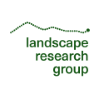The International Competition for the Reclamation of the Hiriya Landfill: A National Israeli Symbol in the ‘Global’ Arena
DOI:
https://doi.org/10.34900/lr.v13i1.792Abstract
The recent international competition for the reclamation of the Hiriya landfill (2004), located in the centre of Israel’s metropolitan area, was the climax of a fiveyear project, in which the fifty-year-old landfill (1948–1998), Israel’s largest, became the focus of international artistic, planning and design activities.
This paper discusses the Hiriya project in order to explore the reciprocity between local activity within the field of landscape architecture and the global arena of landscape architecture practice, focusing specifically on the reclamation of marginal landscapes.
For many years, Hiriya served as a symbol of Zionists’ environmental neglect. Therefore, unsurprisingly, the reclamation of the site and the design of the metropolitan park surrounding it became a national symbol of regeneration, involving world-renowned experts. By examining the planning process, and particularly the recent design competition, this paper explores the relationship between the local and the global, and significantly, the difficulty of bridging these opposing stands visà- vis landscape reclamation. The design process proved that, to be part of the global arena, it is not enough to bring in foreign designers and let them play according to local rules. It requires frankness toward greater global cultural changes that are beyond the sole activity of design. The design proposals exemplify complex and rich interpretations of local and global ideas by both local and foreign designers, but ultimately proving that at times, outsiders are more successful in grasping the site’s genius loci than locals.
Downloads
Downloads
How to Cite
Issue
Section
License
Authors who publish with this journal agree to the following terms:- Authors retain copyright and grant the journal right of first publication with the work simultaneously licensed under a Creative Commons Attribution License that allows others to share the work with an acknowledgement of the work's authorship and initial publication in this journal.
- Authors are able to enter into separate, additional contractual arrangements for the non-exclusive distribution of the journal's published version of the work (e.g., post it to an institutional repository or publish it in a book), with an acknowledgement of its initial publication in this journal.
- Authors are permitted and encouraged to post their work online (e.g., in institutional repositories or on their website) prior to and during the submission process, as it can lead to productive exchanges, as well as earlier and greater citation of published work (See The Effect of Open Access).


